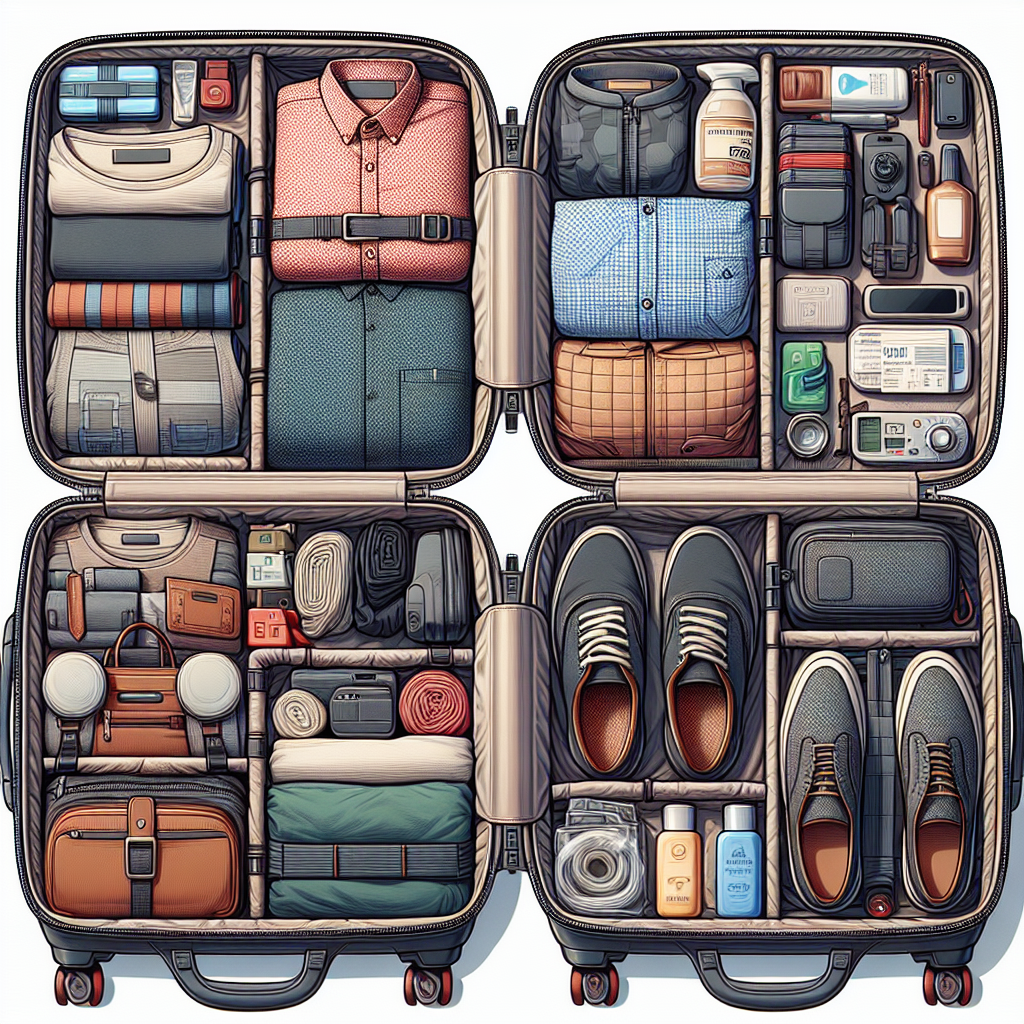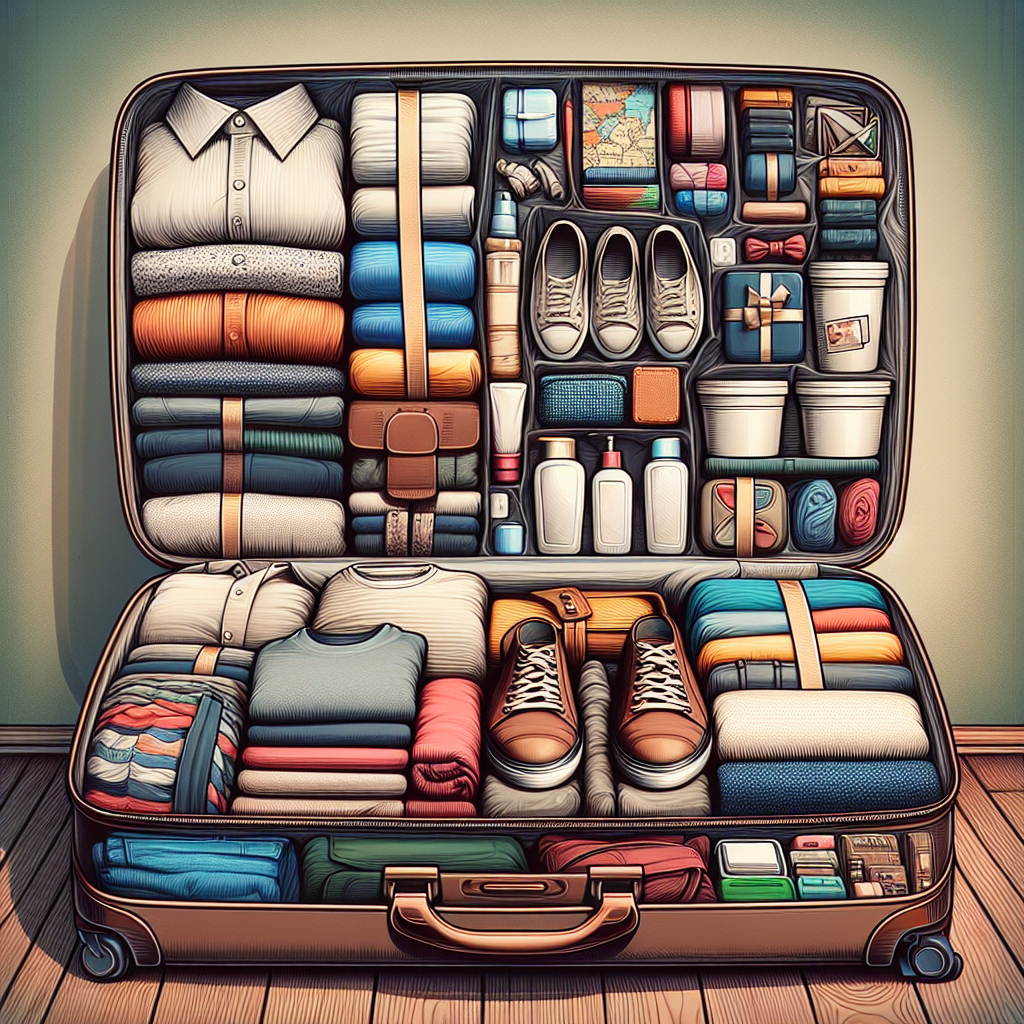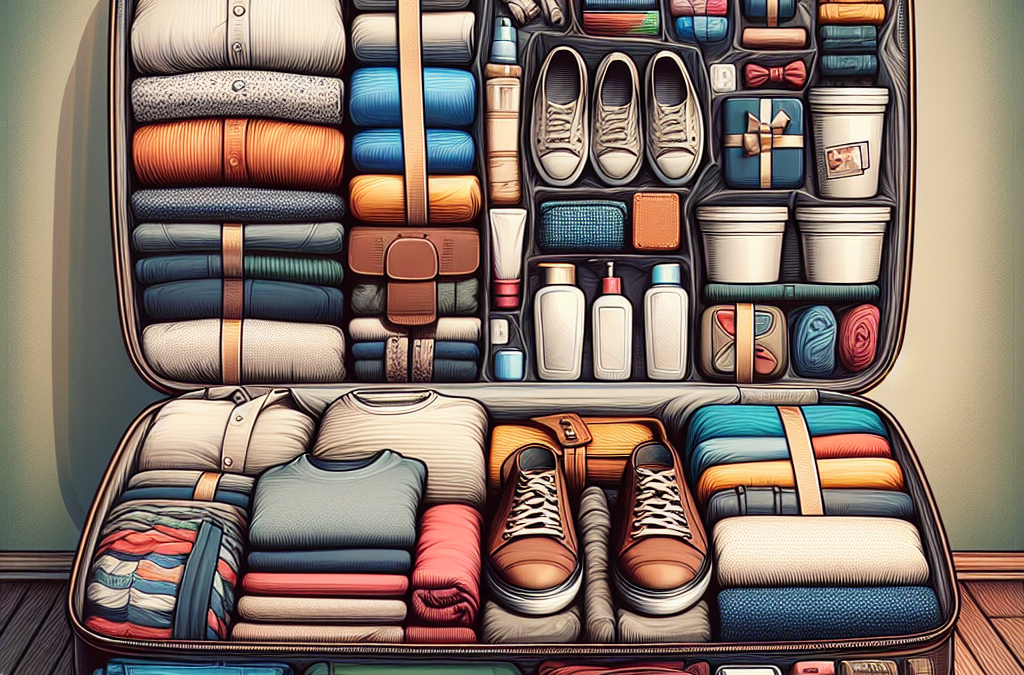Are you tired of lugging around oversized suitcases every time you travel? Say goodbye to the chaos and hello to a new level of organization with “Packing Efficiently: Maximizing Space and Utility”. In this comprehensive guide, you’ll discover clever techniques to arrange your belongings in ways that will not only save you a considerable amount of space, but also maximize the utility of every item you pack. Forget the frustration of leaving essential items behind due to lack of space. Let’s revolutionize your packing experience to make it smoother, more practical, and totally efficient.

Understanding the Essentials of Efficient Packing
Welcome to the skill of efficient packing! Say goodbye to overcrowded suitcases and chaotic, last-minute stuffing! The journey often begins not on the plane, but at home when you start packing. We’ll begin our exploration by defining what efficient packing means.
Defining efficient packing
By definition, efficient packing is to arrange (one’s belongings) in a compact, orderly manner inside a luggage or container for easy transportation during a trip. In simple terms, it’s all about making the most out of every inch of space in your luggage by packing smartly.
Highlighting the need for efficient packing
Why do you need to pack efficiently? Besides avoiding additional luggage fees at the airport, it saves you from the stress and hassle of lugging around heavy, bulky bags. It provides a sense of organization and reduces the risk of misplacing or forgetting important items.
Exploring the two aspects: Maximizing Space and Utilizing Effectively
Efficient packing revolves around two main aspects. First, maximizing the room you have for all the items you need to bring. Second, utilizing this space effectively to properly pack each item to prevent damage and waste of space. Both aspects complement each other in achieving packing efficiency.
Accurate Assessment of Available Space
Before you can start packing, it’s essential to understand the space you’re working with. This involves determining the type and dimensions of your luggage or container.
Identifying the space you have: luggage, backpacks, containers
The luggage, backpacks, or containers you have will largely determine how much space is available for packing. Different types of luggage provide different amounts and configurations of available space.
Figuring out the dimensions of the space
A close companion to understanding your packing space is knowing its dimensions. Measurements of length, width, and height can give you a clear picture of how much you can actually put in your luggage.
Understanding how to calculate and utilize the available space
Once you have the dimensions, you can then calculate the available space. This knowledge builds the foundation for effective space utilization, which involves arranging your items in a way that most efficiently uses this calculated space.
Deciding What to Pack
Knowing what to pack is crucial in efficient packing. It influences how much you will carry and how you will use your available space.
Prioritizing items based on necessity and utility
The best items to pack are those with high necessity and utility. These are items that you absolutely need and will definitely use during your trip. It may include clothing, toiletries, and travel documents among others.
Identifying bulky and space-consuming items
Some items, though essential, can be bulky and consume a lot of space. These could include shoes, jackets, or hairdryers. As part of efficient packing, consider their necessity versus their bulk.
Reducing the number of non-essential items
To add to your efficient packing, consider eliminating non-essential items. This means cutting down on the ‘just-in-case’ items that you may not actually need or use.
Packing Clothes
Packing clothes efficiently is the backbone of effective packing. How you organize and place your clothing items can significantly influence the space you’re able to save in your luggage.
Adopting space-saving packing methods: rolling, bundling, compression bags
Adopt space-saving packing methods for your clothes. Rolling or bundling clothes can save more space compared to folding. Compression bags can further reduce the volume of your clothing.
Selecting multipurpose clothing items
Multipurpose clothing items are a godsend when it comes to packing effectively. They serve more than one function, cutting down on the need to pack more items.
Maximizing space by packing clothes in shoes, corners and gaps
Maximize space by shoving socks or other small clothing items in your shoes. Use corners and gaps within your luggage to fit in additional clothing items.

Packing Travel Essentials
Now let’s talk about travel essentials. These include toiletries, travel documents, money, and other things that you simply cannot travel without.
Packing toiletries in travel-sized containers
To save space and comply with airport regulations, pack your toiletries in travel-sized containers or purchase travel-sized versions of your products.
Prioritizing travel documents, money and other essentials
Remember to keep your important documents, money, and other essentials within easy reach and in a secure compartment in your luggage.
Utilizing pocket spaces for small essentials
Make good use of pocket spaces in your luggage to stow away small essentials. These could include travel-sized toiletries, travel documents, and other small items.
Packing Electronics
Electronics are often indispensable, even when traveling. Here are some tips on how to pack them efficiently.
Protecting devices with cases and covers
However efficient your packing, it should never compromise the safety of your items, especially fragile electronics. Always use sturdy cases and covers for your devices.
Stacking devices according to size and shape
For better space utilization and organization, stack your devices according to their size and shape. Always place larger, flat items at the bottom and lighter, smaller ones at the top.
Carrying cables and chargers in separate pouches or compartments
Stow your cables, chargers, and other accessories in separate pouches or compartments to avoid tangling and maintain orderliness.
Using Packing Accessories
Packing accessories like packing cubes, compression sacks, vacuum bags, and ziplock bags can help keep your luggage orderly and maximize space.
Choosing the right packing accessories: packing cubes, compression sacks
Packing cubes and compression sacks come in different sizes and help to compartmentalize your items. They also compress your clothing to free up more space.
Maximizing space with vacuum bags
Vacuum bags can shrink bulky clothing items by removing the air and creating more space in your suitcase.
Organizing with ziplock bags and small pouches
Ziplock bags and small pouches are excellent for organizing smaller items and prevent them from floating around in your suitcase.
Weight Distribution
Ensuring balanced weight distribution while packing is crucial. It goes a long way in promoting carrying comfort and protecting your belongings.
Understanding weight distribution for carrying comfort
To make your travels easier, understanding weight distribution is key. The goal is to maintain a balanced weight throughout your luggage, preventing any side from being too heavy.
Keeping heavier items at the bottom and center
Always place your heavy items at the bottom and center of your luggage. This helps in maintaining balance and prevents lighter items from getting crushed.
Avoiding strain with balanced packing
By ensuring a balanced pack, you avoid placing strain on any part of the bag, expanding its lifespan, and avoiding any discomfort while carrying it.
Packing for Specific Trips
Your packing strategy might slightly change depending on the type of trip you’re undertaking. Let’s take a look at how to pack for beach/tropical destinations, treks or camping trips, winter holidays, and business travels.
Packing for beach or tropical destination
When packing for beach or tropical destinations, consider lightweight and compact clothing, sun protection items like sunglasses, hats, and sunscreen, and don’t forget a good book!
Packing for a trek or camping trip
For treks or camping trips, prioritize functional clothing and gear. While packing, ensure weight is evenly distributed throughout your backpack. Every item’s placement matters!
Packing for a winter holiday
Winter requires heavy and chunky clothing, which can be a packing nightmare. Opt for layering clothing rather than packing bulky pieces and use compression sacks or vacuum bags to save space.
Packing for business travels
Business travels require neat and wrinkle-free outfits. Pack your business suits using dry cleaner bags to minimize wrinkles. Roll up your ties and place them inside shoes or gaps to save space.
Unpacking and Repacking
Lastly, it’s also important to unpack and repack efficiently during and at the end of your journey.
Unpacking without disorder
The manner in which you unpack can maintain the efficiency of your packing. Remove items in an orderly manner, and keep the system of your suitcase intact.
Maintaining packing order during the trip
While on your trip, aim to maintain the packing order that you established when you were packing for it. This reduces repacking time and ensures you don’t leave anything behind.
Efficient repacking for the return journey
Efficient repacking is vital for your return journey. Maintain the same packing order and don’t forget to leave sufficient space for souvenirs. Repack items that were used during the trip and check for any missing items before leaving your accommodation.
And there you have it! The complete guide to packing efficiently! Remember that practice makes perfect. The more you do it, the better you’ll get. Safe travels and happy packing!

